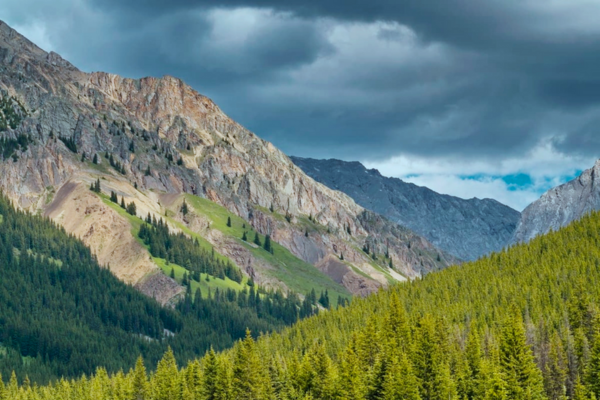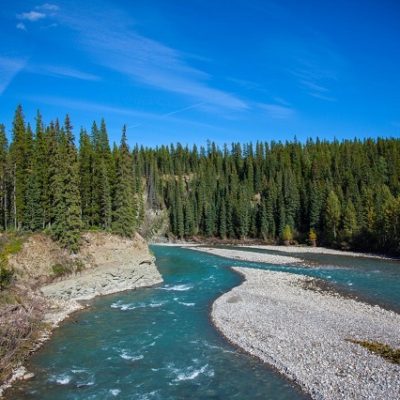Area to be know as Bighorn Country | MEDIA RELEASE, November 23, 2018
Yellowstone to Yukon Conservation Initiative (Y2Y) and the Canadian Parks and Wilderness Society (CPAWS) Northern and Southern Alberta chapters along with Paddle Alberta celebrate the announcement that the Government of Alberta intends to create a new park system that includes a large wildland provincial park.
Alberta’s Premier and Environment and Parks Minister announced today a wildland provincial park, three provincial parks, four public recreation areas and two public land use zones will be created just west of Rocky Mountain House, within a new multi-use region called Bighorn Country.
“We are thrilled about this new major land protection from the Alberta government,” says Hilary Young, senior program manager at Y2Y. “This advances protection of our province’s natural treasures for all Albertans today and in the future. It also brings us toward meeting global standards for protected areas.”
Katie Morrison, conservation director with the southern Alberta chapter of CPAWS says this is the third major addition of protected areas in the province from the current government. “Today’s announcement helps complete the gap between Jasper and Banff National Parks. Previous protections in the Castle area were critical for closing the gap between Waterton and the protected areas of the Central Rockies, and the recent creation of the world’s largest network of protected boreal forest around Wood Buffalo National Park is key for helping conserve boreal caribou and other wildlife.”
“This protection conserves headwaters, the source of drinking water for millions of people downstream in Edmonton and other communities. It also provides continued opportunities for Albertans to recreate and connects habitat for some of Alberta’s most threatened wildlife — important for their ability to survive and thrive in the Yellowstone to Yukon region,” says Young.
The new protected area will conserve about 4,000 square kilometers of rich wildlife habitat for vulnerable species identified for recovery under the Species at Risk Act, including grizzly bear, bull trout, and both limber and whitebark pine. As well, 88 per cent of the water in the North Saskatchewan River originates in the Bighorn region.
The groups are celebrating the wildland park while noting that a lot remains to be worked out during the management planning process for the protected areas and public land use zones. Y2Y and CPAWS will continue to work toward increased conservation of these areas over time.
“The Bighorn Country concept is a made-in-Alberta solution modeled after Kananaskis which creates both high protection and well managed use for both industry and recreation areas across the region. The wildland park accomplishes something really significant, and I am optimistic that we will find ways to meaningfully protect water and wildlife through land-use planning east of the park.” says Kecia Kerr, executive director of CPAWS Northern Alberta.
Under wildland provincial park status, the Bighorn will continue to support quiet wilderness recreation activities such as hiking, backcountry camping, hunting, fishing, and mountain biking, while protecting the North Saskatchewan River’s headwaters from environmental threats including extractive industries. The public land use zones east of the park provide for a more multi-use landscape including the ability to have well-planned and managed recreation.
“As a fourth generation central Albertan, and long-time paddler and hiker, I have explored a good deal of the proposed Bighorn Wildland Park by canoe, kayak and on foot. I’ve observed increases in oil and gas development, logging and motorized off-road recreation here. I have also observed the far too limited protection provided to these landscapes. This protection of the upper North Saskatchewan River Basin is critical,” says Mark Lund, vice-president of Paddle Alberta.
“The wildland park moves Alberta very close to achieving its commitment to protecting 17 per cent of our lands by 2020 under Canada Target 1, an important milestone towards achieving the protection needed to conserve biodiversity in the long-term,” says Kerr. “This wildland park is a wonderful gift to Albertans.”
Wildland park designation also opens the door to co-management with Indigenous nations, representing an enormous opportunity for a government-to-government determined land-use regime in an area with immense historical and contemporary value for Indigenous peoples.
More News

All-Seasons Resort Policy Released

Critical Habitat and Industry Lobbying Part 4: How DFO Allows Critical Habitat Destruction


